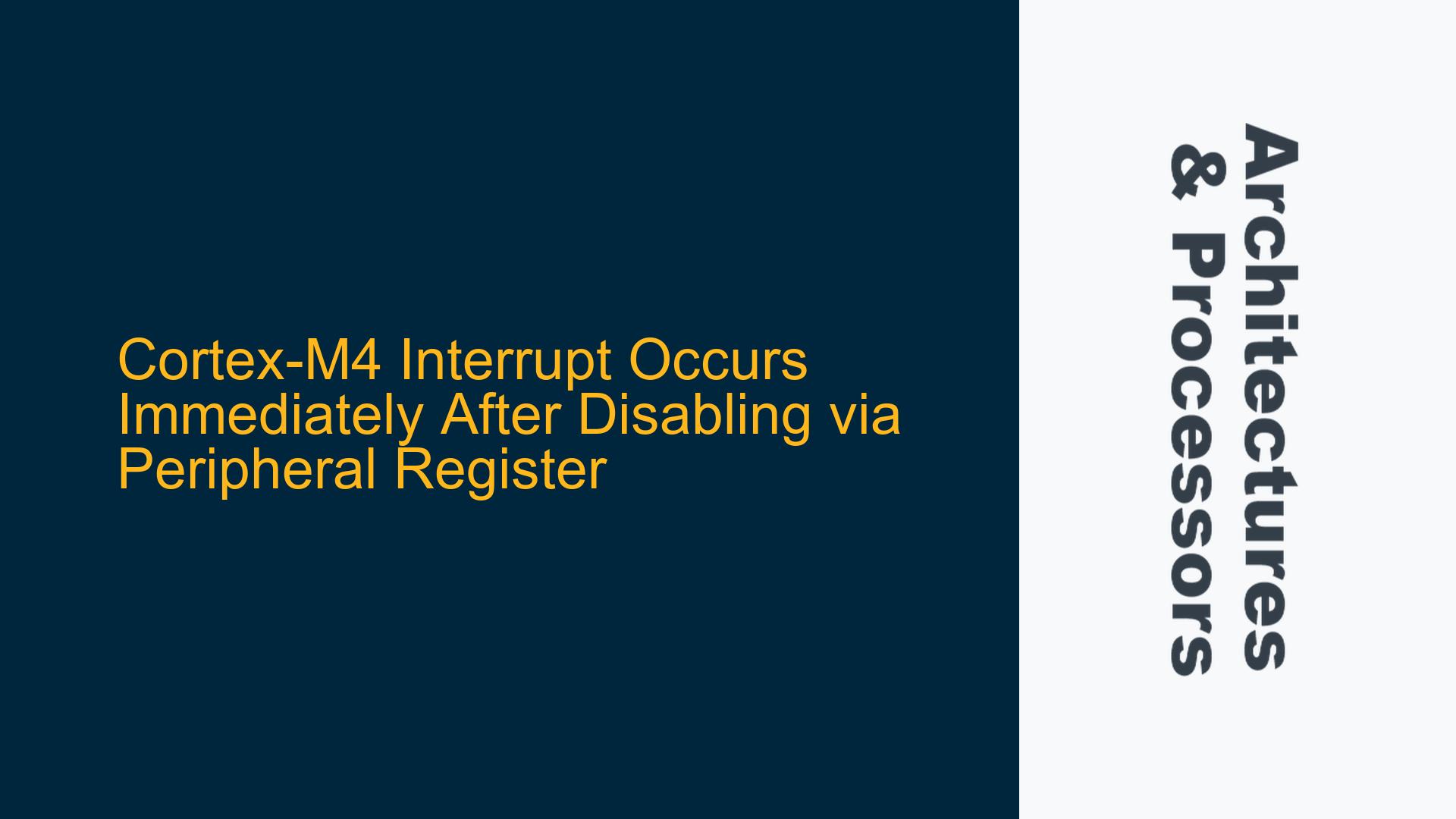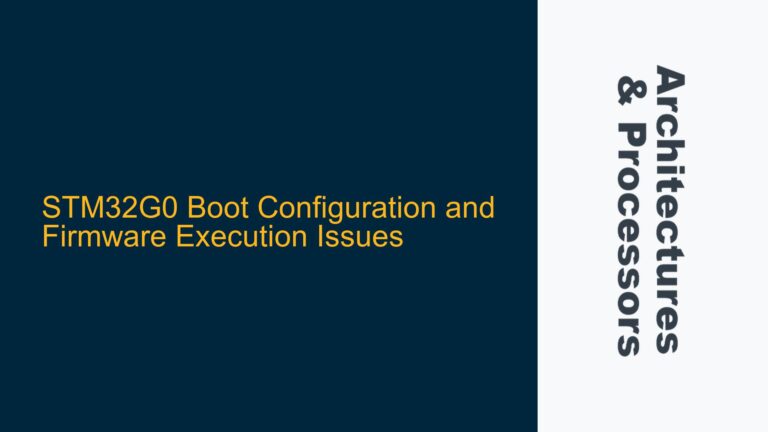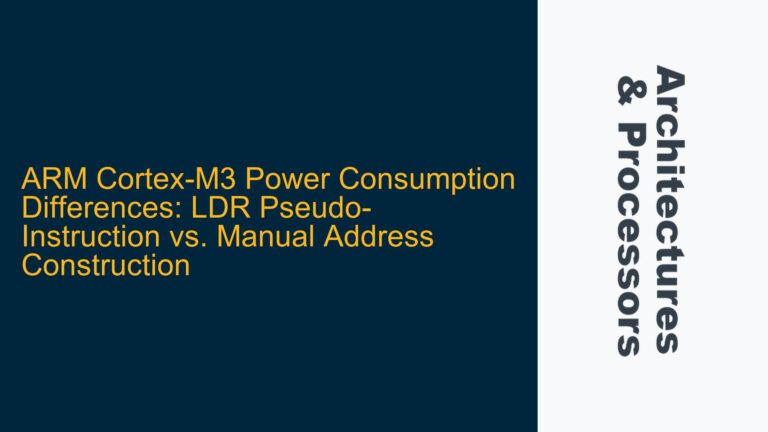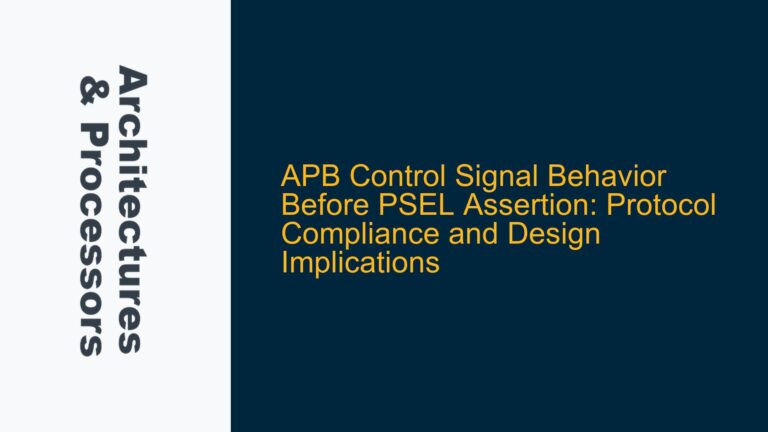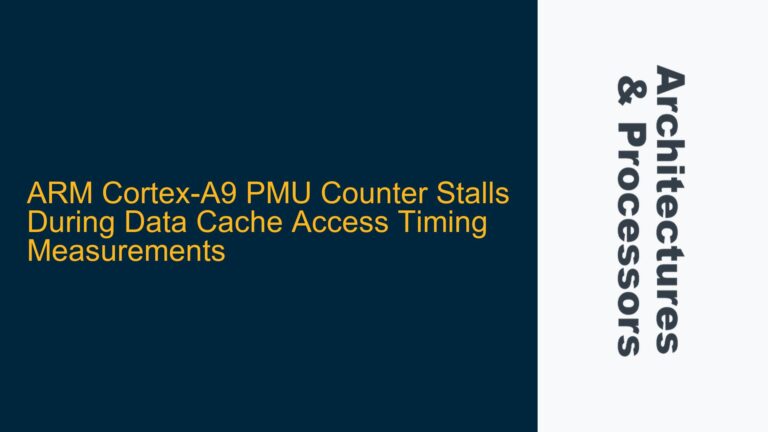Cortex-M4 Interrupt Timing Issue Due to Peripheral Write Buffer Latency
The Cortex-M4 microcontroller, specifically the STM32F417 variant, exhibits an unexpected behavior where a timer interrupt occurs immediately after being disabled via a memory-mapped peripheral register. This issue manifests when the interrupt disable operation is followed by a few instructions, and the interrupt service routine (ISR) is triggered despite the interrupt being disabled. The root cause lies in the interaction between the Cortex-M4 core, the peripheral write buffer, and the timing of memory-mapped register writes.
When an interrupt is disabled by writing to a peripheral register, the write operation may not take effect immediately due to the presence of an external write buffer. This buffer, which is not directly managed by the Cortex-M4 core, introduces latency between the write operation and the actual update of the peripheral register. As a result, the interrupt can still be triggered during this latency window, even though the code has already executed the instruction to disable it.
The assembly code provided in the discussion highlights this issue. The interrupt disable operation (STRH r0,[r1,#0x00]) is followed by a series of instructions, and the ISR is triggered at the ADDS r0,r0,#1 instruction. This indicates that the interrupt was pending or occurred during the latency window introduced by the write buffer.
Memory Barrier Omission and External Write Buffer Behavior
The primary cause of this issue is the omission of proper memory barriers and the behavior of the external write buffer. The Cortex-M4 core has an internal write buffer, but it is unaware of any external write buffers that may be present in the system. These external buffers are often implemented by microcontroller vendors to improve performance but can introduce timing issues if not properly managed.
When a write operation is performed to a memory-mapped peripheral register, the data is first written to the internal write buffer. If an external write buffer is present, the data is then transferred to this buffer before reaching the peripheral. The Cortex-M4 core cannot directly monitor the status of the external write buffer, leading to potential timing mismatches.
In the provided code, the DSB (Data Synchronization Barrier) instruction is used to ensure that the internal write buffer is flushed before proceeding. However, the DSB instruction does not account for the external write buffer, which means that the peripheral register may still not be updated immediately. This explains why the interrupt can still occur after the DSB instruction.
Additionally, the use of NOP (No Operation) instructions after the DSB does not guarantee that the external write buffer has been flushed. The NOP instructions simply introduce a delay but do not synchronize with the external hardware. This is why the ISR can still be triggered after the NOP instructions.
Implementing Proper Data Synchronization and Write Buffer Management
To resolve this issue, a combination of data synchronization barriers and additional write operations is required. The goal is to ensure that the peripheral register is updated before proceeding with the rest of the code. The following steps outline the recommended approach:
-
Use
DSBInstruction: TheDSBinstruction should be used immediately after writing to the peripheral register. This ensures that the internal write buffer is flushed and the write operation is completed within the core. However, as previously mentioned, this does not account for the external write buffer. -
Perform a Dummy Write Operation: To account for the external write buffer, a dummy write operation should be performed after the
DSBinstruction. This can be done by writing to a dummy variable or any other memory location. The act of performing another write operation ensures that the external write buffer is flushed, as the system will prioritize completing the previous write operation before handling the new one. -
Read Back the Peripheral Register: Alternatively, a read operation can be performed on the peripheral register after the write operation. This forces the system to wait until the write operation is completed before proceeding. However, this approach may not be as effective as a dummy write operation, especially if the peripheral register does not support read-back functionality.
-
Avoid Using
NOPInstructions: The use ofNOPinstructions should be avoided as they do not provide any synchronization guarantees. Instead, focus on using proper memory barriers and additional write operations to ensure synchronization.
The following code snippet demonstrates the recommended approach:
unsigned int dummy_variable = 0;
inline void disable_preemption(void) {
// Disable the interrupt by writing to the peripheral register
TIM4->DIER &= ~(TIM_DIER_UIE);
// Use DSB to flush the internal write buffer
__DSB();
// Perform a dummy write operation to ensure the external write buffer is flushed
dummy_variable++;
// Increment the preemption disabled counter
preemtp_disabled++;
}
In this code, the DSB instruction ensures that the internal write buffer is flushed, and the dummy write operation (dummy_variable++) ensures that the external write buffer is also flushed. This approach guarantees that the peripheral register is updated before proceeding with the rest of the code, preventing the interrupt from being triggered during the latency window.
Detailed Explanation of the Solution
The solution leverages the behavior of the write buffers and the memory system to ensure proper synchronization. Here’s a detailed breakdown of why this approach works:
-
Internal Write Buffer Flush: The
DSBinstruction ensures that all pending write operations in the internal write buffer are completed before proceeding. This means that the write to theTIM4->DIERregister is guaranteed to be executed by the core. -
External Write Buffer Flush: The dummy write operation (
dummy_variable++) forces the system to wait for the previous write operation (toTIM4->DIER) to complete before handling the new write operation. This is because the external write buffer must process write operations in order. By introducing a new write operation, the system is forced to flush the external write buffer, ensuring that theTIM4->DIERregister is updated. -
Avoiding Race Conditions: The combination of the
DSBinstruction and the dummy write operation eliminates the race condition that allows the interrupt to be triggered after the disable operation. This ensures that the interrupt is properly disabled before any further code is executed.
Performance Considerations
While the proposed solution effectively resolves the issue, it is important to consider the performance implications. The additional DSB instruction and dummy write operation introduce a small overhead. However, this overhead is negligible compared to the potential issues caused by an incorrectly timed interrupt. In most real-time systems, ensuring correct behavior is more critical than minimizing a few clock cycles of overhead.
Alternative Approaches
In some cases, alternative approaches may be considered depending on the specific requirements and constraints of the system:
-
Double Write Operation: Instead of using a dummy variable, the same peripheral register can be written twice. This ensures that the first write operation is completed before the second write operation is initiated, effectively flushing the external write buffer.
-
Read-Modify-Write Sequence: A read-modify-write sequence can be used to ensure that the peripheral register is updated. This involves reading the register, modifying the value, and then writing it back. However, this approach may not be as effective as a dummy write operation, especially if the peripheral register does not support read-back functionality.
-
Hardware-Specific Solutions: Some microcontrollers provide hardware-specific mechanisms to ensure proper synchronization. For example, certain STM32 microcontrollers offer a "write-through" mode for specific registers, which ensures that writes are immediately propagated to the peripheral. Consulting the microcontroller’s reference manual can provide additional insights into hardware-specific solutions.
Conclusion
The Cortex-M4 interrupt timing issue caused by peripheral write buffer latency is a subtle but critical problem that can lead to unexpected behavior in real-time systems. By understanding the interaction between the Cortex-M4 core, the internal write buffer, and the external write buffer, developers can implement effective solutions to ensure proper synchronization. The recommended approach involves using the DSB instruction to flush the internal write buffer and performing a dummy write operation to flush the external write buffer. This combination guarantees that the peripheral register is updated before proceeding, preventing the interrupt from being triggered during the latency window.
While this solution introduces a small performance overhead, it is a necessary trade-off to ensure the correct and reliable operation of the system. By following these best practices, developers can avoid subtle timing issues and ensure that their Cortex-M4-based systems operate as intended.
